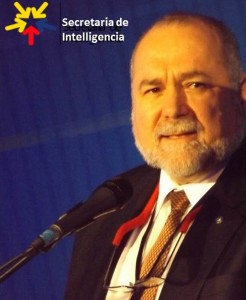
The blockchain is a cryptographically secured register. A long, long time ago we used to hook a line printer to important systems and they'd print a subset of their logging to it. An intruder taking over a box could erase the contents of /var/log, but that printout was immutable. The blockchain provides something similar, but it's globally distributed, so *everyone* with access can write on it in an immutable fashion.
EXTRACT: Today an Argentinian freelancer who uses their banking system has to wait five days for an international transfer, lose 30% of his income to predatory fee structures, and run the very real risk that one of the parties involved in the clearing will simply misplace their money entirely. A Bitcoin based competitor can do this transaction at 1% of the cost in 0.1% of the time, make a profit while doing so, and there is nothing the government can do to stop it.
The blockchain offers immutable storage and ones that are broadly adopted offer a resilient, globally distributed service. Think of this as being in the same condition the relational database was in the late 1980s/early 1990s. There will be WAR in IT departments as things currently held in vulnerable clustered systems get migrated to well populated blockchains. Assuming a very large instance of a blockchain that corrects the limited transaction volume and slow convergence that plagues Bitcoin, a company like Gyft could shift a portion of their data storage to it, freeing themselves of the need to maintain and secure some portions of their current database infrastructure.
The second generation blockchains, exemplified by Ethereum, offers a distributed *computing* environment. I can create the definition of a business transaction, code it up in a Python like language, and turn it loose on an Ethereum blockchain. As an example of how this would work, global anonymity network provider Cryptostorm exists because it's compartmentalized to protect marketing, business management, and operations by keeping them in different jurisdictions. It is possible to create a Distributed Autonomous Organization(DAO) by defining the ‘rules of engagement', and then any attempt to interdict the operation is left facing an entity that is smeared across *every* jurisdiction with internet access. The only way to stop a DAO that exists in a global blockchain is to *shut down the entire internet*.
The Tor anonymity network is run by volunteers. What I just described for Cryptostorm can also be done for that network. Those that operate exits and relays could load an Ethereum based client, and those using it could drop some Ether (Ethereum ‘currency') in every time they went online, thusly funding the network without leaving a trail.
Today an Argentinian freelancer who uses their banking system has to wait five days for an international transfer, lose 30% of his income to predatory fee structures, and run the very real risk that one of the parties involved in the clearing will simply misplace their money entirely. A Bitcoin based competitor can do this transaction at 1% of the cost in 0.1% of the time, make a profit while doing so, and there is nothing the government can do to stop it.
Ethereum provides not just a distributed immutable register, it also provides a distributed computing environment. Recall that part of the evolution of relational databases was their ability to execute code on the database server itself, rather than dragging data back and forth across the network. A similar facility will exist in the next generation of blockchains.

ROBERT STEELE: I am looking closely at PayServices.com. Their Cosmic Butterfly App has been blessed by my technical advisors. A number of things have been obvious to me from 1988 onwards (see my Big Ideas at my personal website), among them the urgency of creating a geospatial foundation for all information in all languages; the urgency of creating a scalable sparse matrix relational database that is language independent (e.g. adopting Pierre Levy's Internet Economy Meta Language or IEML); and the urgency of freeing all information from centralized control and from any threat of manipulation. Data, like art, must have a validated provenance and not be subject to forgery, theft, or concealment (a few ruthless counterintelligence functions not-with-standing). We are entering the era of ethics, truth, and virtue.

See Also:



